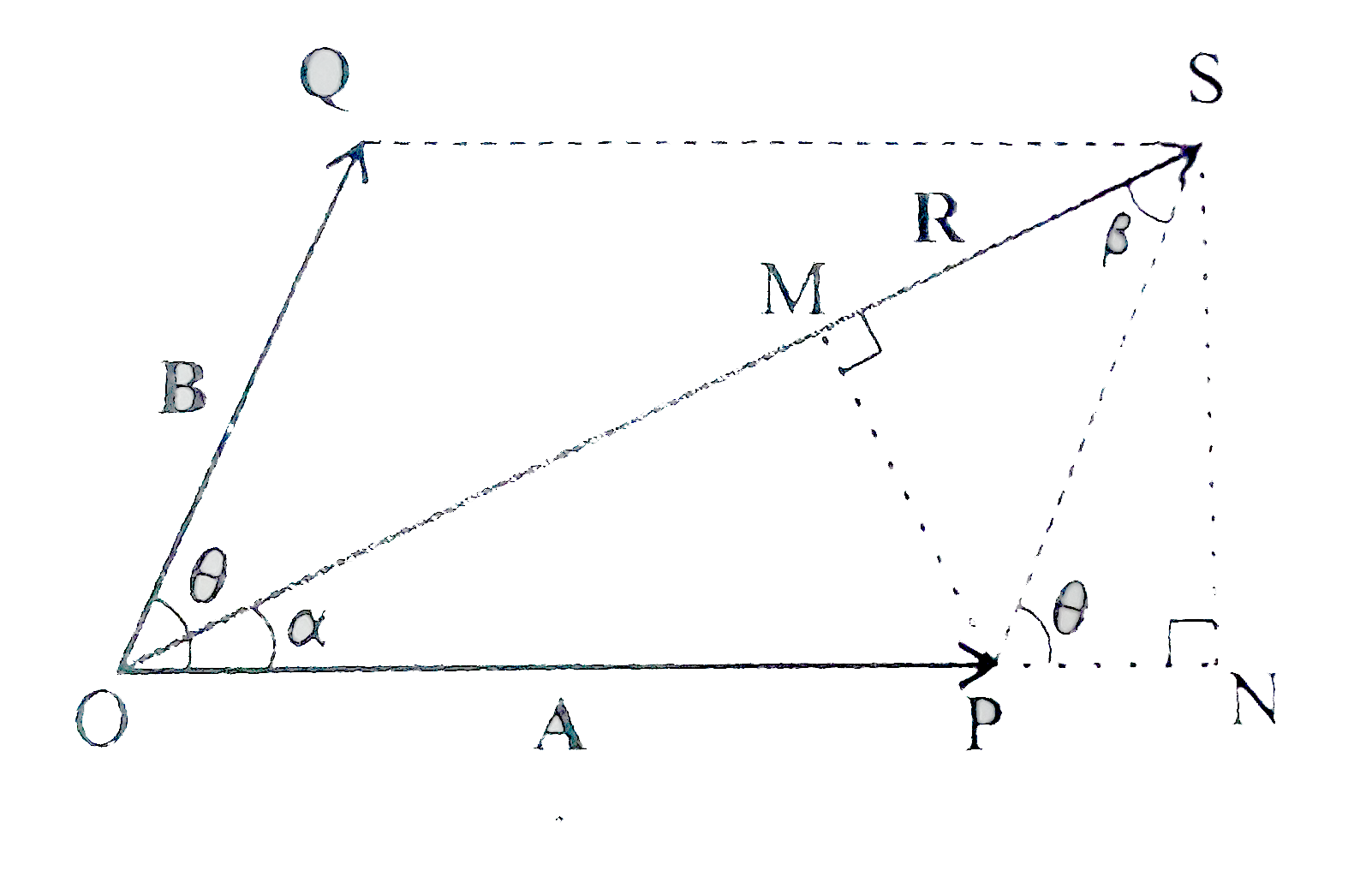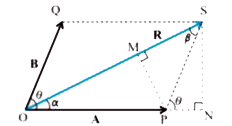find the resultant of two forces each having magnitude F0 and angle between them is θ.Solution in Telugu
F2Resultant=F20+F20+2F20cosθ=2F20(1+cosθ)=2F20(1+2cos2θ2−1)=F20×2cos2θ2
Fresultant=2F0cosθ2
Topper's Solved these Questions
- ELEMENTS OF VECTORS BOOK - AAKASH SERIESCHAPTER - ELEMENTS OF VECTORS EXERCISE - Short Answer type question
4 Videos
- ELEMENTS OF VECTORS BOOK - AAKASH SERIESCHAPTER - ELEMENTS OF VECTORS EXERCISE - Very Short Answer type Questions
8 Videos
- ELASTICITYBOOK - AAKASH SERIESCHAPTER - ELASTICITYEXERCISE - Questions for Descriptive Answers
10 Videos
- EXPANSION OF GASESBOOK - AAKASH SERIESCHAPTER - EXPANSION OF GASESEXERCISE - QUESTIONS FOR DESCRIPTIVE ANSWERS
4 Videos
Similar Questions
Define scalar and vector with two examples each.
View SolutionThe vertical component of a vector is equal to its horizontal component . What is the angle made by the vector with X-axis.
View SolutionA steel wire of area of cross-section A and length 2L is clamped firmly between two points seperated by a distance .2L.. A body is hung from the middle point of the wire such that the middle point sags by a distance X. Calculate the mass of the body and the angle made by the string with the horizontal. (Young.s modulus of Steel = y)

View SolutionA thin uniform tube of length 9 m closed at one end is immersed in water to a depth of 7.5 m. Find the height h to which water rises in the tube. Ignore any temperature change and take atmosphere pressure as 10 mg water column.

View SolutionTwo forces, each of magnitude F have a resultant of the same magnitude F. The angle between the two forces is
View SolutionFind the magnitude and direction of the resultant of two vectors A and B in the terms of their magnitudes and angle θ between them.

View SolutionFind the magnitude and direction of the resultant of two vectors A and B in the terms of their magnitudes and angle θ between them.

View SolutionTwo forces of equal magnitude F are at a point. If theta is the angle between two forces then magnitude of the resultant forces will be
View SolutionTwo equal forces are acting at a point with an angle of 60∘ between them. If the resultant force is equal to 20√3 N, find the magnitude of each force .
View SolutionTwo equal forces are acting at a point with an angle of 60∘ between them. If the resultant force is equal to 20√3 N, find the magnitude of each force .
View SolutionA resultant of 60 N is produced due to two forces having magnitudes in the ratio 4:5 Calculate the magnitude of each if the angle between them is 30^(@)
View SolutionFind the magnitude and direction of the resultant of two vectors A and B in terms of their magnitudes and angle θ between them .

View SolutionFind the magnitude and direction of the resultant of two vectors A and B in terms of their magnitudes and angle theta between them .
View SolutionFind the magnitude and direction of the resultant of two vectors A and B in terms of their magnitudes and angle θ between them .

View SolutionFind the magnitude and direction of the resultant of two vectors A and B in the terms of their magnitudes and angle θ between them.

View Solutionfind the resultant of two forces each having magnitude F0 and angle between them is θ.
View Solution
